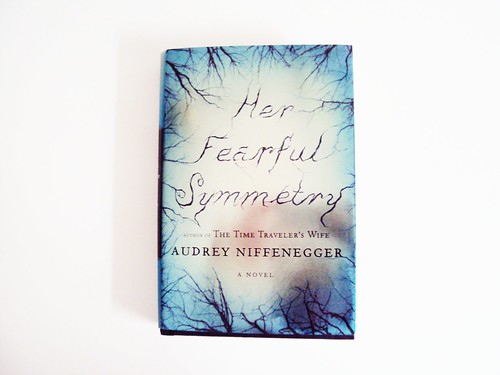This a guest post from Ramou Sarr.
One of the most frustrating aspects about discussions of race, racism and privilege, is that you are never quite sure when you are finished. The resolution is dissonant and it can be disheartening to trudge through so much emotion but emerge sans resolution. One party – the White party – is often left wondering what exactly it is that the other party – the Black party – wants from them.
White privilege is a set of unearned privileges that one benefits from because they are White. It is both a favored state of one race over another as well as a systematic conferred dominance of one race over another. Research scientist and anti-racist activist Peggy McIntosh has become the point person for the unpacking of Whiteness since her 1988 article, White Privilege: Unpacking the Invisible Knapsack, listed twenty-six examples of how she benefits from her race. Among these benefits were:
I can swear, or dress in second hand clothes, or not answer letters, without having people attribute these choices to the bad morals, the poverty, or the illiteracy of my race. I am never asked to speak for all the people of my racial group. If a traffic cop pulls me over or if the IRS audits my tax return, I can be sure I haven’t been singled out because of my race. I can if I wish arrange to be in the company of people of my race most of the time.
These privileges benefit White people without them having to do anything in order to receive them. The fact that these privileges just are is in part what contributes to the uncertainty among White people when it comes to what to do about it.
Let me first tell you what Black people don’t want. We don’t want your guilt. White guilt does absolutely nothing for me or any other person of color. While your hours spent Googling poverty in America or examining the mass incarceration of Black males leaves you feeling as though you want that burden of privilege lifted, you leave us – the Black folks – rolling our eyes and annoyed that you have managed to turn a discussion about racism and Black oppression into one about you. The problem with White guilt is that, in addition to being incredibly useless, it serves as a passive approach to shift responsibility away from yourself; as if feeling guilty about your privilege is your contribution to ending racism. That’s it. You wipe your hands of it.
Writer and filmmaker Molly Secours attended a diversity conference alongside African American diversity activist, Dr. Francis Cress Welsing, and told Welsing that because she understood White privilege and veered away from certain terminology she didn’t feel as though she was privileged. Secours had concluded that because she was aware of racism and privilege she wasn’t a part of the system that oppresses the Black community. To which Welsing responded, “I beg to differ. We don’t need you to fix us. What Black and brown people want from White people is to fix yourselves.”
This encounter highlights a rather interesting aspect of privilege denying that often occurs when a White person is confronted with their privilege. In some instances a White person will become defensive, deny that their privilege exists, and point to the Black community as the source of their own oppression. On the other end, and as Secours has done here, a White person will acknowledge their privilege, feel guilty about Black oppression, and then attempt to separate themselves from those White people who contribute to racism. Secours’ guilt had seemingly alleviated her of any responsibility she had to address the problem of racism that continues to tug on our proverbial coat sleeves, daring us to look. Secours’ acceptance of White privilege and acknowledgment of Black oppression seemed to her to be enough. And that is precisely it.
Issues of racism and privilege have always fallen on the shoulders of the Black community. The problems that plague us are perceived to be problems that we have brought upon ourselves by continuing to fall into the stereotypes of lazy, poor, unintelligent criminals, who refuse to pull ourselves up by our metaphorical bootstraps in order to escape the burden of Blackness that we have carried on our shoulders for so long. White people today feel no responsibility for the state of the Black community because slavery and the Jim Crow era were so long ago!
No, you may not have owned slaves. And maybe you have never personally contributed to the systematic oppression that has for hundreds of years led to substantially higher unemployment, poverty and incarceration rates among the Black community. But here we are. Acknowledging that you are a part of the problem, despite not intentionally contributing to the oppression/privilege dichotomy, as well as part of the solution is imperative to confronting the issue.
Now what do Black people want? Quite simply: We want you to get over yourselves. What is perhaps the hardest concept to grasp when discussing racism and privilege is that despite the White (mostly male) population being looked to as the authoritative voice on pretty much everything, this is quite possibly the one subject in which there is no doubt that people of color are, and always will be, the experts.
I ask that you listen to your Black counterparts when they attempt to explain these subjects to you. We have in almost every instance been thinking about these subjects and discussing their implications and significance for far longer than you have, as your privilege allows you to be oblivious to them everyday. Your privilege makes it possible for you to not see race, to buy in to the ideology of a “post-racial America,” an ideology that is nearly laughable to people of color, to rid yourself of the burden of race and racism.
You must continue to be diligent in examining your privilege as people of color continue to examine their other-ness. Not a day goes by where I do not think about my Blackness. I am constantly aware that I am Black and often stepping into White spaces, either on the Internet via various social media, or in my everyday life – when I get on the T, get post-work drinks with friends or take advantage of panels and discussions around Boston. I am aware that I am almost always one of few people of color nearly everywhere I go and this is an awareness of which I, and many of my Black brothers and sisters, are incapable of escaping. What we want from you, White people, is an acknowledgment that these things exist and will continue to exist so long as we stray away from the sometimes painful and emotion-laden discourse that seeks to rush race and privilege to the forefront, no longer hiding behind the veil of this being someone else’s problem. We need to talk about it until it doesn’t hurt anymore.
About the Author: Ramou Sarr is a Boston-area public defense paralegal and social sciences graduate student. She can be found drinking her fifth cup of coffee at a Harvard Square bookstore or online at www.ramou.tumblr.com.












